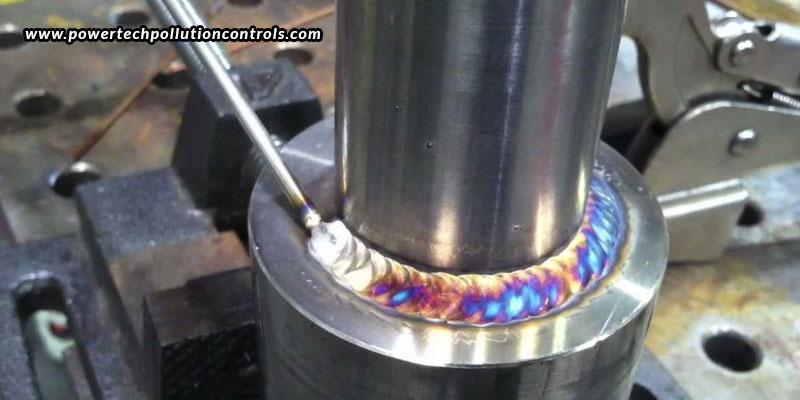
Welding Stainless Steel – The Hazards
Although welding stainless steel is a common process, it also raises issues for work environments. The fundamental alloy component in all stainless steel classes is chromium. Thus, welding stainless steel results in the production of chromium, which is converted into its hexavalent state, Cr(VI) during the welding process. It has been established that the production of these substances during stainless steel welding has detrimental effects on the health of welders and those present in the welding area. The extremely toxic Cr(VI) fume is a known carcinogen, which can harm the eyes, skin, sinuses, throat, and lungs.
The different techniques used and the emissions involved
The two most popular welding techniques, Tungsten Inert Gas (TIG) and Metal Inert Gas, both produce different quantities of fumes when welding stainless steel. (MIG). The Manual Metal Arc (MMA) method is used in about 80% of welding processes, and the Flux Cored Arc (FCA) method is only used in 5% of specialized businesses for particular applications. TIG generates the least amount of fume, but it also generates substantial amounts of ozone and nitrous oxide, both of which are irritant gases. The most emissions are typically produced by MIG welding, followed by FCA and MMA welding.
Enhancing workplace safety and guarding the wellbeing of employees
To safeguard long-term health, welders should take precautions to protect themselves from the fumes from welding stainless steel by using appropriate fume extraction equipment and professional-grade ventilation systems. To determine whether a business needs an engineered solution or if using a plug-and-play mobile or portable extractor is the best option for the workplace’s daily operations, risk assessments can be performed with an expert in ventilation and filtration systems. In addition, personal protective equipment is also important to enhance welders’ working environments and safeguard their health.
What every welder must know
The dangers of welding stainless steel are something a welder should be aware of. Prior to starting a welding project, it’s critical to understand the risks involved in that specific welding operation. The risks will vary depending on the welding process, the materials being welded (base metals, surface coatings, electrodes), and the surrounding circumstances (outside or in a confined space). To learn more about the potentially dangerous materials used in welding goods and the fumes that may be produced, one must request a material safety data sheet (MSDS). Before one begins welding, one needs to make sure to know about the entire process and the materials being involved. Keeping in mind to use the proper level of filter efficiency can prevent the spread of dangerous fumes and fine particulate dust throughout the workplace. It is also important to choose the correct fume extraction equipment.
We recommend the Fumekiller, which is a high-efficiency two-stage electrostatic precipitator that is designed and developed for the capture and control of fumes, mist, smoke, and fine dust, arising in places where welding, induction hardening, heat treatment, oil quenching, wire drawing, annealing, soldering, wave soldering, dip tinning, rubber curing, and die casting are performed. This welding fume extractor from Powertech Pollution Controls has many safety features incorporated, such as motor protection, limit switches, and high voltage fault trip circuitry, which enable safe, reliable, and efficient functioning. The system thus contributes to a safer and healthier work environment where all kinds of toxic airborne pollutants are removed.


